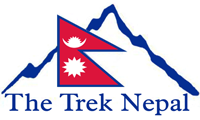Common Health problem in trekking
Trekking is a wonderful experience that gives you a new outlook on life and adventure. We are so entangled in its mysteries that we seldom forget that even a small misstep can cause death. No, No, I’m not talking about any disaster or apocalypse. I simply want to address the most common health problem in trekking that many travelers face. Although these problems are small, you cannot undermine them.
Let’s take a look at some of the common problems that trekkers face while trekking in the hills and mountains.
1. Altitude sickness – the most common health problem in trekking
The altitude sickness is synonymous with mountain sickness and acute mountain sickness. It is by far the most customary problem in the mountains. It occurs whenever you elevate or descend too quickly without giving the body time for acclimatization. On the contrary, if you give your body time for acclimatization, then the chances of getting it is very low.This is the most common health problem in the trekking.
2. High Altitude Pulmonary Edema (HAPE)
High-altitude pulmonary edema is a severe form of altitude sickness that affects people over altitude exceeding 2500 meters. There are cases where this was seen on elevation below 2500 meters. Many external and internal factors make a person prone to HAPE and some of them are genetic. In this condition, the lungs are filled with fluids.
The common symptoms of HAPE are:
- Tightness in the chest
- Coughing
- Difficulty in breathing
- Feeling weak
Other extreme symptoms include:
- Rapid breathing
- Rapid heart rate
To prevent HAPE, make sure that you understand your current medical background. If you have any breathing problems, then refrain from harsh activities. Also, acclimatize properly and carry the appropriate medications.
3. High Altitude Cerebral Edema (HACE)
HACE is a severe health problem in trekking. Without proper guidance and care, it can result in death. HACE is a medical condition in which fluid accumulates in the brain that results in swelling. It occurs due to traveling in the high elevations. The common symptoms involved in HACE are:
- Lethargy
- Nauseous
- Breathing difficulty
- Failure in co-ordination
When a person suffers from HACE, the only possible solution is to take him to the hospital. However, there are methods that we can use to prevent them from occurring. They are:
- Slowly elevating and descending
- Giving the body proper time for acclimatization
- Drinking adequate fluids and eating healthy
4. Sunburn – a health problem in trekking
You might have the notion that trekking in the Himalayas is cold and there is not much sunlight. Although it is cold, at the same time, sunrays are unforgiving. As you have to walk for at least 4-5 hours a day on the Himalayan terrain, you’ll gradually experience sunburn. It is another health problem in trekking that people face. The method to combat it is pretty simple. All you have to do is put some quality sunblock.
Furthermore, you can wear sunglasses, scarfs, and hats that cover your face and head.
5. Blisters and Sore legs
As you have to walk during the entirety of the trek, blisters and sore feet are your constant companion. Blisters occur when your skin constantly rubs on a surface which prevents it from getting moist. In the long run, it is painful and irritating. To prevent blisters from happening, make sure that you have the correct trekking boot and avoid wet socks.
Sore legs on the other hand occur when you travel lengthy distances. It is a common health problem in trekking which has a simple solution. Before you sleep, massage your feet with balms or oil. This will help your legs to recover faster.
6. Travelers diarrhea
This is an irritating problem to have while traveling. It normally occurs when you eat something new for the first time and your body cannot digest it. Fear not as you can tackle this problem by taking the necessary medications and letting your body adapt to the new food. It can be cumbersome at first but with the right treatment, you can cure it.
These were the most common health problem in trekking that anyone can witness during their travels. We hope that you carefully navigate through them to make your trek successful.

